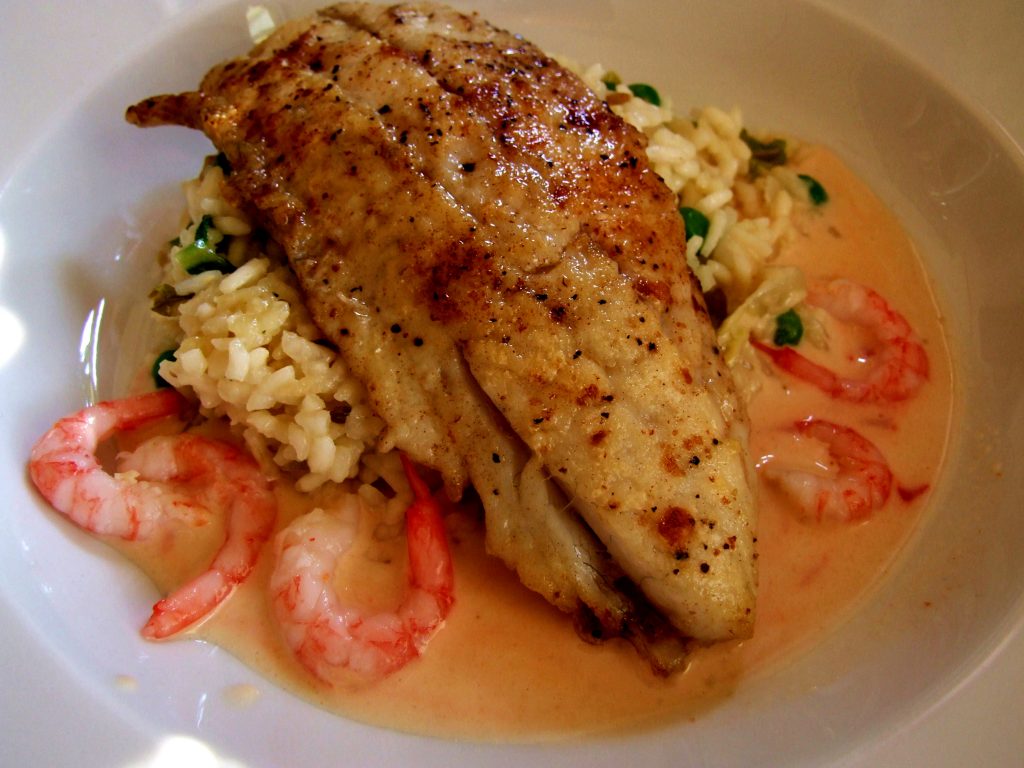
“Why are cooks afraid of sauces?”
This is the way I usually begin my Womens’ Institute talk on the subject. It’s true though. Home cooks who are happy to attempt shortcrust pastry, breadmaking, a curry from scratch or a full roast dinner including Yorkshires, are often scared of sauces. The number of times I’ve heard someone say ‘He’s very good at making gravy. He makes it from the pan juices you know,’ as if it’s some sort of black art that can’t possibly be attempted by normal people. The thing is, this gifted person who makes the gravy, do they have any other responsibilities for the meal, or are they allowed a good three hours just to focus on that whilst the other half does absolutely everything else, including washing the pans, warming the plates and laying the table? No, because they are treated with such reverence, and they don’t want to give the game away. It’s a man thing a bit like barbecuing, i.e. doing the easy bit, and not the preparation or the clearing up. And so the charade goes on.

My Ladies, as I like to call them, get a three quarter hour demonstration during which I make four sauces. Lemon butter sauce, pepper sauce, cheese sauce, and a lovely silky tomato lemongrass and coconut sauce, which goes with anything Indian-ish, hot or cold. Sauces are important – a bad sauce will ruin a meal, and a good one make it, and despite the perceptions applied to gravy making, making a good one is relatively easy, just don’t go down the classically complicated French route and you’ll be fine.
I’m at the home of a new customer somewhere over towards Kettering. Michelle and Gary are a nice couple, with a few friends over for the evening, and all is going well. As there are just seven of them I’ve not brought a waitress with me. They’ve chosen two of my most popular dishes: a fillet of beef with pancetta mash, duxelle, buttered kale, port jus and a puff pastry topping for main, and a lemon tart with poached strawberries for dessert. Although the main course has six elements to it I can do it in my sleep, and the dessert is cold, so I just have the bruléeing and the sugarwork decorations to worry about. I go through to clear the plates from the main course, and we get chatting. They’re off on holiday soon, I’ve been cooking for about 5 years now, it’s not too far to where I live, I’m not too keen on Australian wine myself I’m afraid, and so on.
I bruléed the tart with my blowtorch while they were eating the main course, so it can chill and crisp up in the fridge. I retrieve it and carefully portion it into eight with my warmed filleting knife, and start plating up, working the slices onto the dessert plates. Next are the three pieces of poached strawberry per portion (odd numbers, see), and then I manoeuvre the triangular sugarwork so it sits against the edge of each slice of tart, glistening nicely and adding a touch of class to the plates. There is of course a spare portion, so as I have not yet eaten, and I need to give them a bit of time between courses, I may as well tuck into it now. It’s rather good.
I take the cream jug out then carry the plates through to the dining room two at a time and place them in front of Michelle and friends. I’m just taking out the last two when I notice Michelle reach out and pick up a small jug. She starts to pour. The liquid she pours is not cream, it is dark red. Strangled words half form on my lips as time slows almost to a halt and the liquid falls in super slow mo towards her lovely lemon tart.
“Dooooooonnnnnnn’……..” I hear myself trying to say. But the port jus I have somehow forgotten to remove from the table forms a beautifully consistent coating over Michelle’s lemon tart. I somehow manage to communicate with her that she must not, under any circumstances, eat her dessert, while at the same time telling her that there aren’t any more slices left. I think it wise to omit the bit about me eating the extra piece she could otherwise have had.
Michelle isn’t having any of it. She stoically scrapes the port just from her tart back into the jug, and pours a good dollop of cream onto it, then tucks into it, claiming that actually, it makes for a rather interesting combination. My feeling is that the other guests enjoy theirs somewhat more.
I am embarrassed of course. It is my fault after all. I learned a few lessons that night. Always keep a spare of everything you can, and don’t throw anything out until it’s safe to do so. Take a waitress, even for smaller numbers. Make sure the table is clear before serving the next course. And be afraid, be very afraid of sauces.
Notes
There are more useful recipes in Sunday Lunch than any other cookbook I’ve read, Delia apart. People often ask me who my favourite chef is, and Gordon F Ramsey is the answer. That produces a few raised eyebrows, but he knows his stuff, and his classic techniques such as the sweetcrust pastry used for the lemon tart in this book are as good as anyone’s.
